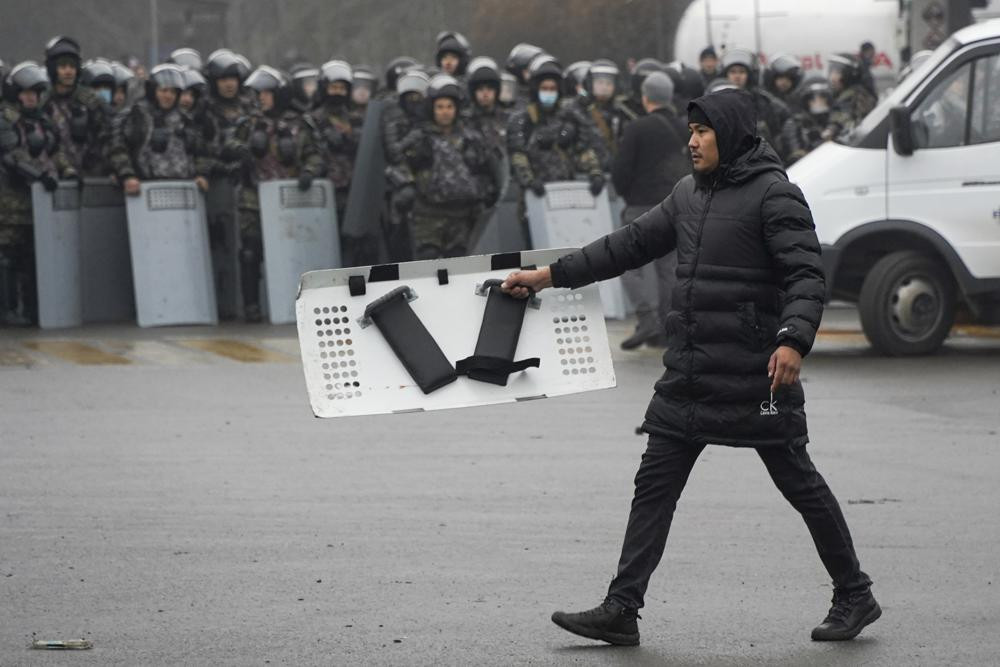Dozens of protesters were killed in Kazakhstan in attacks on government buildings and at least a dozen police officers died, including one who was found beheaded, authorities said Thursday.
There were attempts to storm buildings overnight in the country’s largest city, Almaty, and “dozens of attackers were liquidated,” police spokeswoman Saltanat Azirbek said. She spoke on state news channel Khabar-24. The reported attempts to storm the buildings came after widespread unrest in the city on Wednesday, including seizure of the mayor’s building, which was set on fire.
State news channel Khabar-24 cited the city commandant’s office as saying Thursday that another 353 law enforcement officers were injured in addition to the 12 killed.
Kazakhstan is experiencing the worst street protests the country has seen since gaining independence three decades ago.
A Russia-led military alliance, the Collective Security Treaty Organization, said early Thursday that it would send peacekeeper troops to Kazakhstan at the request of President Kassym-Jomart Tokayev. Kazakhstan has been rocked by intensifying protests that began on Sunday over a sharp rise in prices for liquefied petroleum gas fuel. The protests began in the country’s west but spread to Almaty and the capital Nur-Sultan.
On Wednesday, Tokayev vowed to take harsh measures to quell the unrest and declared a two-week state of emergency for the whole country, expanding one that had been announced for both the capital of Nur-Sultan and the largest city of Almaty that imposed an overnight curfew and restricted movement into and around the urban areas. The government resigned in response over the unrest.
Although the protests began over a near-doubling of prices for a type of liquefied petroleum gas that is widely used as vehicle fuel, their size and rapid spread suggested they reflect wider discontent in the country that has been under the rule of the same party since gaining independence from the Soviet Union in 1991.
Tokayev claimed the unrest was led by “terrorist bands” that had received help from unspecified other countries.
Kazakhstan, the ninth-largest country in the world, borders Russia to the north and China to the east and has extensive oil reserves that make it strategically and economically important. Despite those reserves and mineral wealth, discontent over poor living conditions is strong in some parts of the country. Many Kazakhs also chafe at the dominance of the ruling party, which holds more than 80% of the seats in parliament.
Many of the demonstrators who converged on the mayoral office Wednesday carried clubs and shields, according to earlier reports in Kazakh media. Tass later said the building was engulfed in flames.
The protests appear to have no identifiable leader or demands. Many of the demonstrators shouted “old man go,” an apparent reference to Nursultan Nazarbayev, the country’s first president who continued to wield enormous influence after his 2019 resignation. Nazarbayev dominated Kazakhstan’s politics and his rule was marked by a moderate cult of personality. Critics say he effectively instituted a clan system in government.
After the demonstrations spread to Nur-Sultan and Almaty, the government announced its resignation, but Tokayev said the ministers would stay in their roles until a new Cabinet is formed, making it uncertain whether the resignations will have significant impact.
At the start of the year, prices for the gas called LPG roughly doubled as the government moved away from price controls as part of efforts to move to a market economy.

